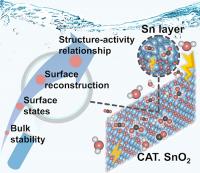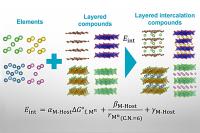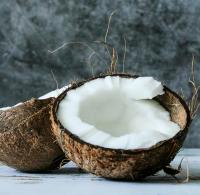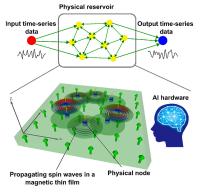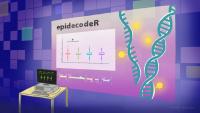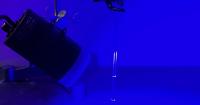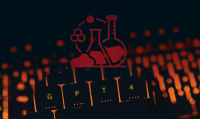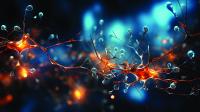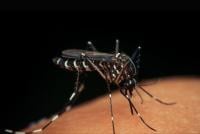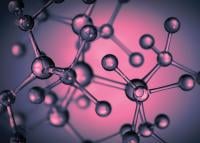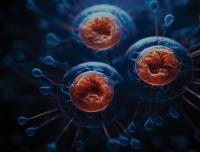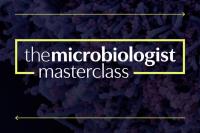Content is provided by our community of institutions, partners, researchers and journalists.
Tohoku University
08 Mar 2024
In a new step towards combating climate change and transitioning to sustainable solutions, a group of researchers has developed a research paradigm that makes it easier to decipher the relationship between catalyst structures and their reactions.
08 Mar 2024
Researchers from the Institute of Industrial Science, The University of Tokyo and collaborating partners have created guidelines for the design of intercalated materials, which will accelerate research on energy storage, electronics, and more.
Newcastle University in Singapore
08 Mar 2024
An international multidisciplinary team of researchers from Singapore, India, Malaysia and Indonesia are breaking boundaries in 3D Printing. They have developed Coir Fiber Polymer Composites with enhanced strength, presenting a new and sustainable way for applications in food and medical packaging.
Asia Research News
07 Mar 2024
In celebration of International Women's Day, we are putting the spotlight on women experts from various fields who are open to speaking with international media about their research and advocacies.
Tohoku University
06 Mar 2024
A group of Tohoku University researchers has developed a theoretical model for a high-performance spin wave reservoir computing (RC) that utilizes spintronics technology. The breakthrough moves scientists closer to realizing energy-efficient, nanoscale computing with unparalleled computational power.
Institute for Integrated Cell-Material Sciences (iCeMS) at Kyoto University
05 Mar 2024
A novel method for studying genes in testicular cells of living animals could lead to breakthroughs in male contraception and fertility treatments.
Osaka University
05 Mar 2024
SANKEN researchers achieved the acceleration of adiabatic evolution of a single spin qubit in gate-defined quantum dots for the first time. After the pulse optimization to suppress quasistatic noises, the spin flip fidelity can be as high as 97.5% in GaAs quantum dots. This work may be useful to achieve fast and high-fidelity quantum computing.
Hiroshima University
05 Mar 2024
The Network for Education and Research on Peace and Sustainability at Hiroshima University is calling for short articles, analyses, and commentary submissions that explore the peace and sustainability nexus.
Kanazawa University
04 Mar 2024
In a study recently published in the journal SMALL, a weekly peer-reviewed scientific journal covering nanotechnology, published by Wiley-WCH, Germany, researchers from Nano Life Science Institute (WPI-NanoLSI), Kanazawa University, Japan, collaborating with Professor Sarikaya, Seattle, USA, used frequency modulated atomic force microscopy to reveal the molecular architecture of genetically designed and point mutated peptides and their self-organizations each forming single-molecule thick, distinct biological crystals on atomically flat graphite and MoS2 surfaces, offering a potential platform for hybrid technologies such as bioelectronics, biosensors, and protein arrays.
MAP Academy
04 Mar 2024
In the early seventeenth century, the royal ateliers of the Mewar kingdom, in present-day western India, witnessed the emergence of a new miniature painting tradition. The Mewar School, as it is known, was patronised by the ruling Sisodia dynasty. Stemming from manuscript illustration, this tradition evolved to encompass intricately detailed portraiture. Delve into the evolution of the Mewar School, tracing its distinct styles, aesthetic influences, master artists, and the shifting preferences of its royal patrons.
Lingnan University (LU)
04 Mar 2024
The Council of Lingnan University, in consultation with the Court, approved the appointment of Prof Raymond Chan Hon-fu as the Vice-President (Academics) cum Provost of Lingnan University for a term of five years, effective from 1 June 2024. As one of the world-renowned scholars recruited by the University’s recent “Lingnan-60 Global Talent Recruitment”, Prof Chan is appointed concurrently as Chair Professor of Scientific Computing, and will take the lead on the University’s strategic development on academic education and oversee the academic operations of the University, including the Faculty of Arts, Faculty of Social Sciences, Faculty of Business and the School of Interdisciplinary Studies. He will also oversee faculty affairs including recruiting, developing, and retention, and a number of academic support units, including the Office of Service-Learning (OSL), Lingnan Institute of Further Education (LIFE), the Library and the Information Technology Services Centre (ITSC) as well as the Office of Global Education (OGE) and the Teaching and Learning Centre (TLC) via the Associate Vice-President (Academic Quality Assurance and Internationalisation).
Asia Research News
01 Mar 2024
Asia Research News monitors the latest research news in Asia. Some highlights that caught our attention this week are tiny tattoos for fish scales, how jellyfish can inspire forensics, and our intrinsic affinity for music.
International Science Council Regional Focal Point for Asia and the Pacific
29 Feb 2024
The Pacific is taking a critical step to establish an Academy of Sciences and Humanities to unify and recognize Pacific scholars and their research to inform international decisions about the region.
Kavli Institute for the Physics and Mathematics of the Universe (Kavli IPMU)
29 Feb 2024
Jun’ichi Yokoyama once amused his professors by proposing a far-fetched idea of using neutrinos and gravitational waves to observe the Universe. Decades later, he was proven right and contends young scientists should be nurtured to believe in themselves.
Institute for Integrated Cell-Material Sciences (iCeMS) at Kyoto University
28 Feb 2024
A new user-friendly tool helps researchers explore how gene activity is influenced by chemical modifications, providing insights into disease and paths to new treatments.
Hokkaido University
28 Feb 2024
Molecules that are induced by light to rotate bulky groups around central bonds could be developed into photo-activated bioactive systems, molecular switches, and more.
Tohoku University
28 Feb 2024
Organic materials discovered on Mars may have originated from atmospheric formaldehyde, according to new research, marking a step forward in our understanding of the possibility of past life on the Red Planet.
National Institute for Materials Science (NIMS)
28 Feb 2024
Analysis of materials can be done quicker and with less expertise with the help of proven machine learning techniques established in biomedical fields.
Universiti Malaysia Sarawak
28 Feb 2024
Experimental analysis and computer simulations reveal how woven fabric composite materials are deformed by heat.
National Institute for Materials Science (NIMS)
28 Feb 2024
GPT-4 shows promise as an aid to chemistry researchers, yet its limitations reveal the need for further improvements.
Daegu Gyeongbuk Institute of Science and Technology (DGIST)
28 Feb 2024
Magnetic nanorobots delivering nerve cells to targeted tissues could potentially be used to repair damaged brain tissue, as well as other organs.
Universiti Malaysia Sarawak
28 Feb 2024
MozzHub, a user-friendly dengue hotspot detector, could significantly assist the management and control of dengue.
National Institute for Materials Science (NIMS)
28 Feb 2024
Researchers have developed a proof-of-concept system that allows robotic experiments to run without any human intervention.
National Institute for Materials Science (NIMS)
28 Feb 2024
Researchers have developed an AI-driven system that can design novel molecules with any desired properties and suggest methods to create them using readily available materials.
National Institute for Materials Science (NIMS)
28 Feb 2024
Researchers have combined machine learning with robotic process automation to speed up and simplify a time-consuming process.
National Institute for Materials Science (NIMS)
28 Feb 2024
A new technique allows researchers to map how the cellular “skeleton” adapts to external stress.
Universiti Brunei Darussalam
28 Feb 2024
Researchers explore the benefits of export diversification in oil-rich Brunei, breaking free from the development economics "resource curse".
Osaka University
28 Feb 2024
Researchers from Osaka University found that members of the Japanese public are highly sensitive to perceived threats to collective ownership (for example, threats to national territorial integrity or national sovereignty). However, those who are more liberal in their political beliefs tend to be more sensitive to such perceived threats than conservatives.
27 Feb 2024
Applied Microbiology International has announced it will be launching a new series of educational online content called The Microbiologist Masterclass.
Lingnan University (LU)
27 Feb 2024
Lingnan University held a Chinese New Year media reception today (27 February) at its Tuen Mun campus, where Prof S. Joe Qin, President and Wai Kee Kau Chair Professor of Data Science of Lingnan University, together with Prof Xin Yao, Vice-President (Research and Innovation), who joined Lingnan in January; Prof Sam Kwong Tak-wu, Associate Vice-President (Strategy Research); Prof Lau Chi-pang, Associate Vice-President (Academic Affairs and External Relations); and Ms Margaret Cheung Wai-fong, Registrar, shared the latest developments of the University with the media.


